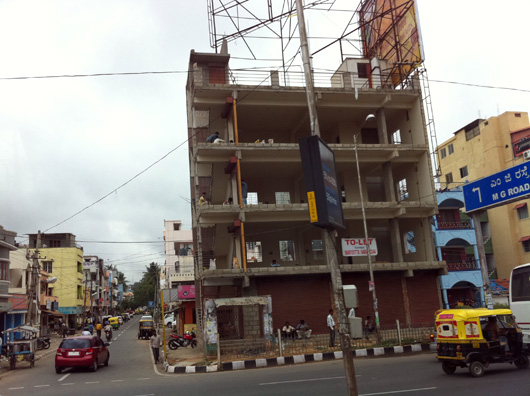I accompanied the Prime Minister’s trade mission to India last week, part of the business delegation visiting Bangalore and Delhi to meet with companies and government. Alongside the business delegation were sports, education, local government and technology.

What can I say? To see even a glimpse of India’s colossal and vibrant democracy was invigorating. And it was only a glimpse: the two days were tightly managed, and I saw mostly board rooms in the Ministry of Commerce and the futuristic landscape of the Infosys campus. My experience of India was a ribbon seen from a coach going between venues.
Watching the discussions between ministers and CEOs was like watching a slow ballet between planets. India will lift hundreds of millions out of poverty before the decade is done, and the infrastructure required needs engineering and financing (to mention just one topic of conversation). It’s always been a fascination of mine how individual action integrates into society-wide change, and it’s good to have a brief look at one mechanism and one corner of that puzzle.
I’ve returned with a new picture of India. The level of entrepreneurialism, the careful attacks on large problems, the energy… it can only be good for the culture of the UK have closer links with this. I don’t know how I or we can be involved, but I’ve made a few connections and will do my best.

Of course being so close to government was good. David Cameron took a number of ministers, and there are particular issues close to my heart: how the Internet start-ups and small businesses in London can somehow ignite into a stronger community, and contribute to the recovery. I asked for thoughts and advice, and I’ve come back with a few ideas about what could help there.
And the conversations with various CEOs etc: it’s not often you have this kind of access if you’re not in that orbit, and in as much as you can learn anything in snatched conversations between events and on coaches, I feel like I have a much better understanding of that world.
On a personal note, it was a joy to see India and meet people there. I’ve never visited although I’m half Indian myself (my mother is East African Indian, and moved from Nairobi to London in 1970). So for me there was a happy and proud confusion of personal and racial identity that permeated the entire trip.
I’m going to follow up on a few conversations this week. And also get a massage to try and fix my back, which hasn’t forgiven me for the amount of time I’ve put it in aeroplane seats recently.
More: read the Prime Minister’s Bangalore speech setting out the reasons for the visit. And here I am in the background in the Evening Standard, which is one for the scrapbook.
